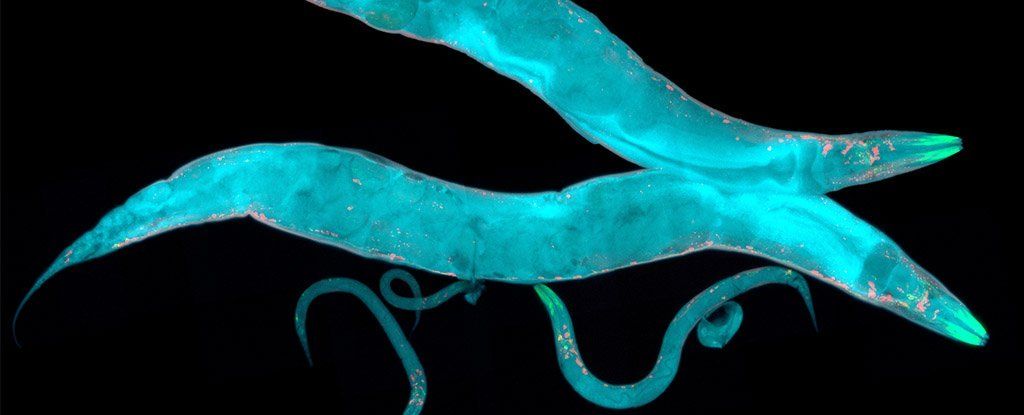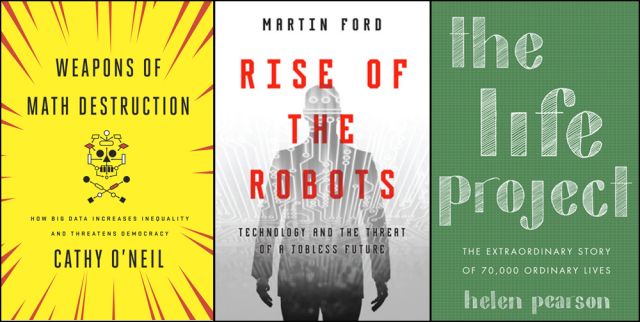This controversial company allows billionaires to buy great genetics for their children…
Category: genetics – Page 563

Scientists Have Observed Epigenetic Memories Being Passed Down for 14 Generations
The most important set of genetic instructions we all get comes from our DNA, passed down through generations. But the environment we live in can make genetic changes, too.
Researchers have now discovered that these kinds of environmental genetic changes can be passed down for a whopping 14 generations in an animal – the largest span ever observed in a creature, in this case being a dynasty of C. elegans nematodes (roundworms).
To study how long the environment can leave a mark on genetic expression, a team led by scientists from the European Molecular Biology Organisation (EMBO) in Spain took genetically engineered nematode worms that carry a transgene for a fluorescent protein. When activated, this gene made the worms glow under ultraviolet light.

Scientists Discover Extinct Human DNA in Cave Dirt
A group of German scientists have found the DNA of extinct humans — without finding any skeletal remains.
The researchers, who are currently excavating even dig sites in Belgium, Croatia, France, Russia and Spain, have found genetic remains of ancient humans like the Neanderthals and their cousins, the Denisovans, in sediment samples, the New York Times reports.
Ancient human DNA has been found in cave dirt in Croatia, but without any skeletal remains, scientists say.

15 books to browse ahead of TED2017
2017 begins on Monday in Vancouver, Canada, and will explore the theme “The Future You.” If the future you is anything like the future us, you are likely curled up in a big cushy chair right now, devouring the contents of a book that flips your thinking. Below, some reading suggestions from the speaker program. Read, enjoy and stay tuned to the TED Blog for beat-by-beat coverage of the conference.
TED2017 begins on Monday in Vancouver, Canada, and will explore the theme “The Future You.” If the future you is anything like the future us, you are likely curled up in a big cushy chair right now, devouring the contents of a book that flips your thinking. Below, some reading suggestions from the speaker program. Read, enjoy and stay tuned to the TED Blog for beat-by-beat coverage of the conference.
Weapons of Math Destruction: How Big Data Increases Inequality and Threatens Democracy by Cathy O’Neil. The decisions that affect our lives are no longer made by humans — they’re made by algorithms. This might sound like a great way around bias and discrimination, but these things are often built right into our mathematical models. When it comes to college admissions, decisions on parole, applications to jobs and the affects of a bad credit score, O’Neil explores the unintended consequences of algorithms. (Read an excerpt.)
The Telomere Effect: A Revolutionary Approach to Living Younger, Healthier, Longer by Elizabeth Blackburn and Elissa Epel. Molecular biologist Elizabeth Blackburn received the Nobel Prize in Medicine for her discovery of telomeres, the ends of chromosomes that — like shoelace tips — keep our genetic information from fraying. Both telomeres and telomerase, an enzyme that restores worn-down telomeres, appear central to the aging process. This book looks at the research — then turns its attention to how our thoughts, bodies and social worlds affect us on the cellular level.
Daisy Robinton — The Fight Against Aging
Primarily talking about CRISPR.
Daisy Robinton explores bioengineering and its potential to end ageing.
“The use of gene-editing technology paired with the dropping cost of genome sequencing and analysis is greatly facilitating our ability to understand the functional and mechanistic impact of those genetic mutations on diseases caused by mutations in DNA sequence,” she says.
ABOUT WIRED HEALTH 2017
Hundreds of healthcare, pharmaceutical and technology influencers and leaders met at the fifth annual WIRED Health event at 30 Euston Square, London on March 9. Discover some of the fascinating insights from the esteemed speakers here: http://wired.uk/O6xMxJ
ABOUT WIRED EVENTS
WIRED events shine a spotlight on the innovators, inventors and entrepreneurs who are changing our world for the better. Explore this channel for videos showing on-stage talks, behind-the-scenes action, exclusive interviews and performances from our roster of events. Join us as we uncover the most relevant, up-and-coming trends and meet the people building the future.
ABOUT WIRED
WIRED brings you the future as it happens — the people, the trends, the big ideas that will change our lives. An award-winning printed monthly and online publication. WIRED is an agenda-setting magazine offering brain food on a wide range of topics, from science, technology and business to pop-culture and politics.
CONNECT WITH WIRED
Web: http://po.st/WiredVideo
Twitter: http://po.st/TwitterWired
Facebook: http://po.st/FacebookWired
Google+: http://po.st/GoogleWired
Instagram: http://po.st/InstagramWired
Magazine: http://po.st/MagazineWired
Newsletter: http://po.st/NewslettersWired
————————–
——–
Facebook: https://www.facebook.com/agingreversed
Tumblr: http://agingreversed.tumblr.com
Twitter: https://twitter.com/Aging_Reversed

We Must Prepare for CRISPR Bioterror Threats
- An advisory council has urged the U.S. to establish a new body that creates plans for national biodefense and to set aside a $2 billion standby fund to address emerging bioterror threats.
- As gene editing technology advances, the potential for its use as a weapon increases, and preparing for such threats before they happen is of the utmost importance.
Though the technology promises seemingly innumerable ways to positively impact human life, gene editing is truly a double-edged sword, with nearly as many potentially negative consequences as benefits. Now, an advisory council to President Obama is urging the government to start creating countermeasures for the negative use of emerging biotechnologies.
This month, the President’s Council of Advisors on Science and Technology (PCAST) wrote a letter to President Obama recommending measures to address this potential for harm using new technologies. It advocates funding new research into antibiotic and antiviral drugs to combat resistance and having a $250 million fund for the stockpiling of vaccines.

A new CRISPR breakthrough could lead to simpler, cheaper disease diagnosis
The controversial laboratory tool known as CRISPR may have found a whole new world to conquer. Already the favored method of editing genes, CRISPR could soon become a low-cost diagnostic tool that could be used practically anywhere to determine if someone has an infectious disease such as Zika or dengue.
The controversial gene-editing tool may be able to identify infections reliably for pennies in places without electricity.
Gene editing opens doors to seedless fruit with no need for bees
Gene-edited seedless tomatoes don’t need pollinating to produce fruit – which could come in useful at a time when bees are on the decline.
